As a dog owner, you know the struggle. You want to keep your pup safe, but you also want them to have the freedom to explore their surroundings and sniff out all of their favorite smells. So how do you decide what type of leash is best for your pup? Well, I’m here to help.
Let’s break down everything there is to know about dog leashes so that you can make an informed decision.
Before Leashing, Do Your Research
Before we get into what the best length is for a leash, let’s go over some important things first, starting with the laws in your state, county, or city regarding leashed or unleashed dogs.
Dog Leash Laws – Requirements Per State
Before we dive into what size leash you should get, let’s first talk about any local laws or ordinances regarding leashes. Different municipalities have different requirements for walking your dog on a leash.
Some areas may require dogs to be leashed at all times, while others may only require them on certain trails or parks. It’s important to familiarize yourself with local laws and regulations before hitting the pavement with your pup in tow!
How to Leash Train a Dog
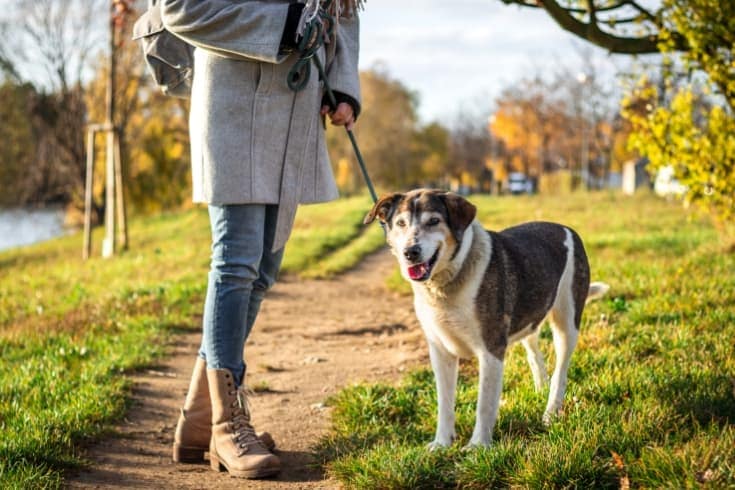
Once you know what the laws are in your area, it’s time to think about whether your pup needs leash training. If your dog is new, then definitely consider leash training as soon as possible! It will help build a good foundation for walking together later and make sure everyone stays safe when out and about.
Here are some tips for successful leash training:
- Start slow: Don’t rush into long walks right away; take it one step at a time!
- Keep treats handy: Having treats nearby can help keep your pup focused and interested in learning.
- Be consistent: Practice makes perfect! Make sure you stay consistent with commands and rewards so that your pup gets used to following specific instructions when out on walks.
- Make it fun: Don’t forget that walking should be enjoyable for both you and your pup! Bring along toys or play games while walking together, so it doesn’t feel like a chore.
To learn more about how to leash train a dog, read this article.
Types of Dog Leashes & Choosing the Right One
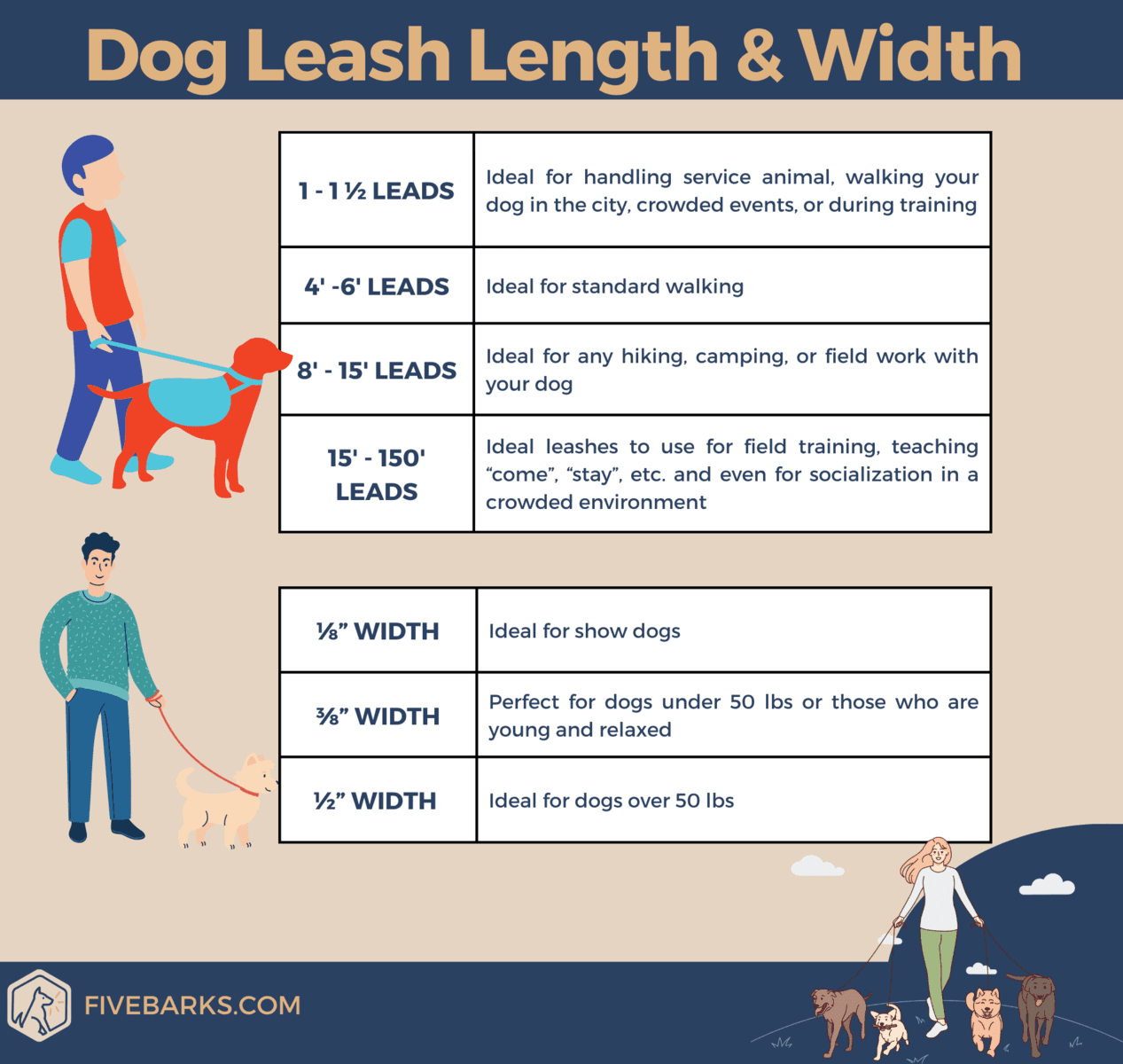
Now that we know our local laws and have practiced some basic training techniques, let’s discuss which type of leash is best for our pup.
There are two main types of leashes—standard collars/leads — which are usually made from nylon or leather, and retractable leashes, which come with a built-in “brake” mechanism so that owners can easily shorten or lengthen the lead as needed without having to tie knots or adjust straps manually.
Both types are great options depending on your individual needs, but make sure that whichever type you choose fits your dog’s energy level and needs.
Types of leashes can include:
Standard Leash – 3′, 4′, 5′ and 6′ lengths
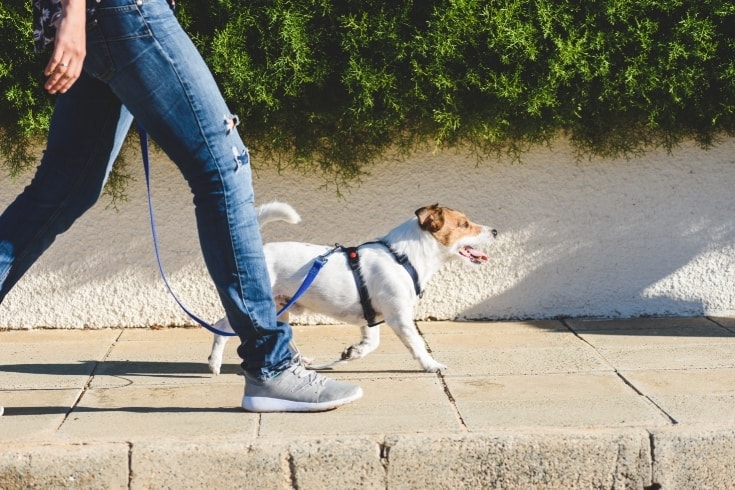
The standard leash is the most common type of leash, and it is typically nylon dog leashes or leather leashes. It’s attached to the collar with a metal clip and is a 6-foot leash. The standard leash is a good choice for dogs that are well-behaved, trained, or are not prone to pulling.
Retractable Leash – 5′ to 30′
The retractable leash is a popular choice for many dog owners as it allows the dog to have some freedom while still being under the control of the owner. The leash is attached to the collar with a metal clip and can be extended up to 26 feet.
These are known to be adjustable leashes for those dogs who want more freedom. However, many experts recommend against using a retractable leash, as it can be dangerous if the dog isn’t trained properly. There are those with reflective material to help with those dark walks.
Hands-Free Leash – 4′, and 6′

A hands-free leash is a great option for dog owners who want to have their hands free while walking their dogs. This excellent leash attaches around the waist, freeing up the hands for other activities such as carrying a coffee or using a phone.
However, it is important to note that hands-free leashes are not suitable for all dogs, as they may be more likely to pull if they are not trained properly.
Training Leash – 10′ to 30′
A training leash is a type of leash that is specifically designed for training. They typically make training leashes from leather or nylon and are available in a variety of lengths. These leashes typically have a clip that attaches to your dog’s collar and a loop that goes around your wrist, giving you more control over your dog during training sessions.
Slip Lead – 3′, 4′, and 5′ lengths
A slip lead is a type of leash that slips over your dog’s head and attaches to his collar in one continuous loop. Professional dog trainers often use slip leads, as they provide more control over the dog than a standard leash does. However, slip leads can also be dangerous if not used properly, as they can tighten around your dog’s neck if he pulls too hard.
FAQs
Can I Use a 6-ft Leash on a 7-ft Board?
So you’ve got a 7-ft surfboard, and you’re wondering if you can use a 6-ft leash on it. The answer is it depends. If you’re planning on surfing in small waves, then a 6-ft leash will probably be fine. However, if you’re going to be surfing in larger waves, consider upgrading to a 7-ft leash.
Are Long Leashes Good for Dogs?
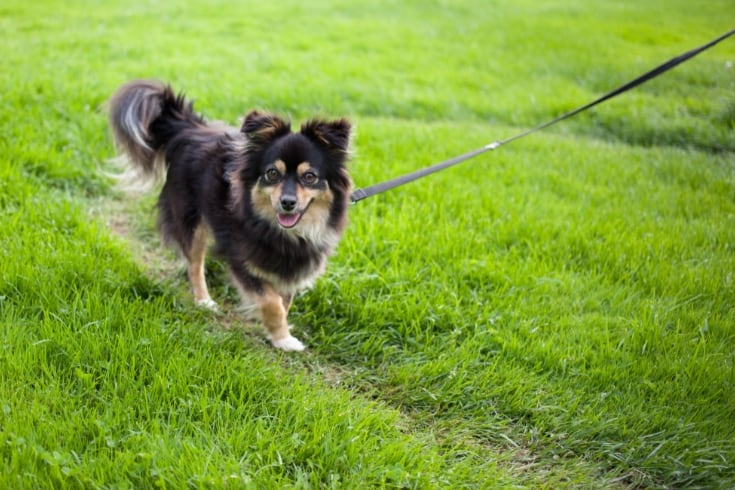
There are both pros and cons to using a long leash. On the plus side, it gives the dog more freedom to explore and sniff around. And if the owner is walking at a leisurely pace, it’s less likely that the dog will get tangled up in the leash.
However, there are also some drawbacks to using a long leash. For example, it can be more challenging to control the dog if it sees something it wants to chase. Long leashes can sometimes get caught on objects or other people, which can frustrate both the dog and the owner.
But How Long Should a Leash Really Be?
Ideally, a traffic leash should be long enough to allow your dog to walk comfortably in front of or beside you without pulling. However, leashes come in all different lengths, so it’s ultimately up to you to decide what works best for you and your dog.
If you’re unsure, start with a shorter leash and gradually lengthen it as your dog gets better at walking politely by your side. And of course, always make sure that your dog is wearing a collar or harness that is comfortable and fits properly. With a bit of practice, you and your pup will enjoy walks together in no time!
What Leash Length Is Best for Recall Training?
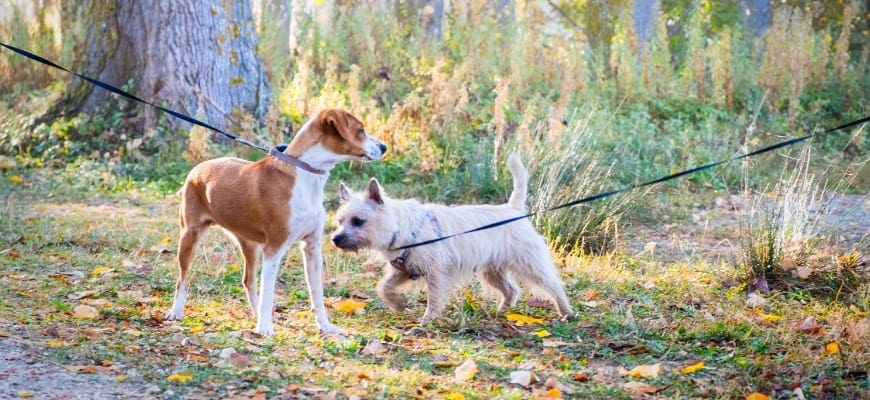
There are nearly as many opinions on the best length leash for recall training as there are dogs in the world. Some folks swear by a long lead, while others prefer a shorter one. I feel the perfect leash length for recall training is about 15-20 feet long.
Why, you ask? Well, it’s just long enough to give Fido some freedom to sniff around and explore but not so long that he gets tangled up. Plus, it’s the perfect length for me to maintain control. So, if you’re looking for my professional opinion on the matter, I would definitely recommend a 15-20-foot leash for recall training. But of course, ultimately, the decision is up to you and your pup.
Conclusion
So there you have it—all the information you need to choose the perfect leash for your pooch! Remember that no matter which style or length of leash you go with, always make sure that both you and your furry friend stay safe during walks together by following all applicable laws in your area and practicing proper leash etiquette at all times. Happy walking!
